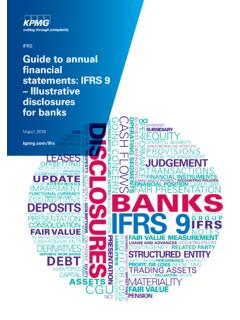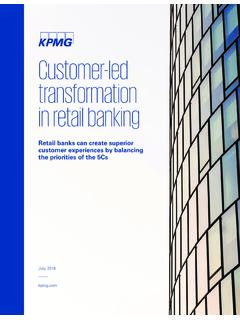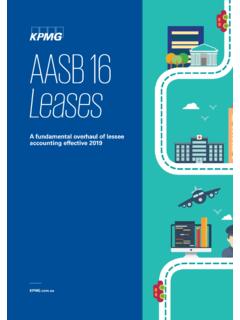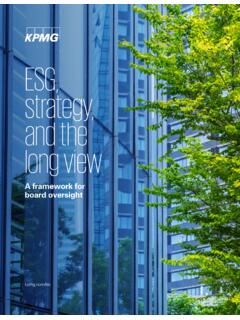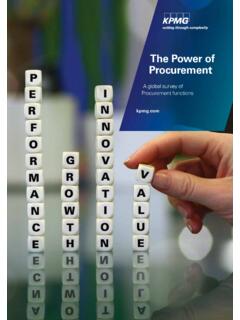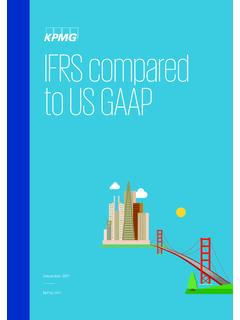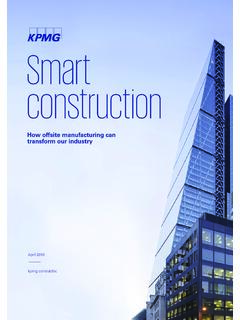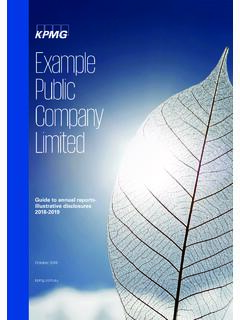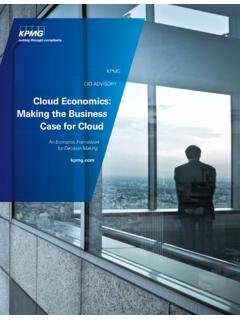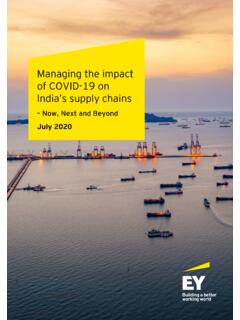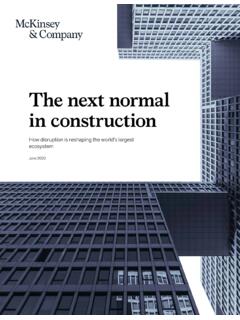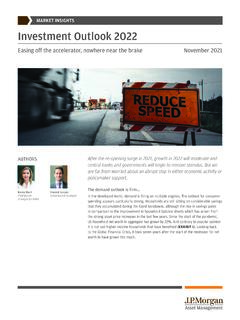Transcription of Looking ahead: Private Equity trends for 2021
1 Ahead: Private Equity trends for 2021 Andrew WeirGlobal Chair, Asset Management and real estate ; Regional Senior Partner and Vice ChairmanKPMG China2020 presented unprecedented challenges arising from the Covid-19 pandemic. Like many other industries, the Private Equity (PE) industry was not immune to the resulting market volatility and uncertainty. However, PE firms have embraced the new reality by adjusting their operating models, strengthening their operational improvement capabilities and by leveraging skilled advisors to adapt business models to become more agile and the crisis, the industry has proven its ability to not only navigate difficult market conditions, but to also position itself for accelerated growth.
2 In Asia, General Partners (GPs) remain overwhelmingly bullish on the outlook for 2021, as demonstrated by the large amount of capital that continues to be raised and that is to be deployed in the Asia Pacific region. Limited Partners showed their confidence by continuing to allocate to alternative asset classes in record amounts, leading to the significant amount of investable capital in the region. The market opportunity for GPs is reflected in the increasing amount of deal activity and the increasing average deal size.
3 While there have been some difficulties in originating new deals in the region during the pandemic, activity has continued to grow steadily, providing a bullish outlook for industry s resilience has been further evidenced by several landmark transactions in 2020, with more expected to come to market this year. Despite the impact of Covid-19, valuations have also held up across most asset types as government support programmeswere administered to steady economies. Many GPs spent significant time this year cultivating existing relationships for opportunities as travel restrictions made building new pipeline a challenge.
4 A major theme for the year will be filling pipelines with new opportunities as travel restrictions seem likely to remain. Another trend that built momentum during the year and should accelerate further is successful GPs diversifying into other alternative asset classes, such as Private credit, real assets, distressed and special situations, ESG and social impact, as well as other thematic specialty funds. This product diversification has enhanced the ability of many funds to grow their assets under management.
5 Given the capital available, the wider range of asset classes that GPs can invest into and the ability of GPs to invest across the capital structure, coupled with PE s value add partnering model, I am confident the industry will continue its strong growth trajectory in China and the rest of Asia in 2021. 2 2021 KPMG, a Hong Kong partnership and a member firm of the KPMG global organisation of independent member firms affiliatedwith KPMG International Limited ("KPMG International"), a Private English company limited by guarantee.
6 All rights reserved. 3 2021 KPMG, a Hong Kong partnership and a member firm of the KPMG global organisation of independent member firms affiliatedwith KPMG International Limited, a Private English company limited by guarantee. All rights reserved. Printed in Hong Kong, 2020 market environment challenged even the most successful Private Equity (PE) businesses. Despite the market volatility and business uncertainty throughout the year, the PE industry was able to adapt practices and prosper. This helped the industry to continue to deliver on its important role to help drive economic growth, enhance business value and deliver returns for investors.
7 Although it was a challenging year for many in the industry, the Asia Pacific PE market remains poised to continue the success it has enjoyed over the last decade, with the amount of capital allocated to the region at record these unprecedented times, PE firms have demonstrated the ability to continue to deploy capital, help guide portfolio companies through the pandemic, and return capital to their investors. All of this has led to advantageous fundraising opportunities for the top performing managers, proving the resiliency of the industry to thrive even in extreme were several notable trends from last year, including increasing allocations to alternative assets and specifically PE and Venture Capital (VC), as indicated by Asia dry powder growing at 22% over the 2019 to 2020 period.
8 [1] Deal activity continues to benefit from the low interest rate environment. Early on, key themes included general partners (GPs) focusing on existing investments and bringing expertise to portfolio company management teams in order to help them navigate the new environment. PE firms used their internal operational expertise, as well as specialised advisors to assist portfolio companies on areas such as customer behaviour changes; recapitalising the business and raising additional capital; reconfiguring supply chains; making strategic acquisitions and portfolio company bolt-ons, among many others.
9 Significant drivers in deal activity included portfolio company bolt-on and tuck-in transactions, take- Private opportunities and PIPE investing, as well as revisiting prior uncompleted GPs Looking to monetise investments this year, the Asia Pacific IPO market continues to show strong investor-led demand. Strong investor demand for IPO opportunities is also expected to continue in 2021 with the China IPO market having over 800 companies in its pipeline[2]. This is after both the mainland China and Hong Kong exchanges registered their most active IPO markets since 2011.
10 It is expected that Asia Pacific exits by way of trade sale should increase significantly over their 2020 levels, given that these were only in the region of US$ billion[3], the lowest figure in several years. Although some volatility and uncertainty will remain in 2021, the industry track record for successfully adapting to and navigating changed landscapes suggests the industry is well positioned for a robust 2021 and Summary[1]Source: Preqin, 2021[2]Source: Mainland China and Hong Kong 2020 review: IPOs and other market trends , KPMG China, December 2020 [3]Source.
